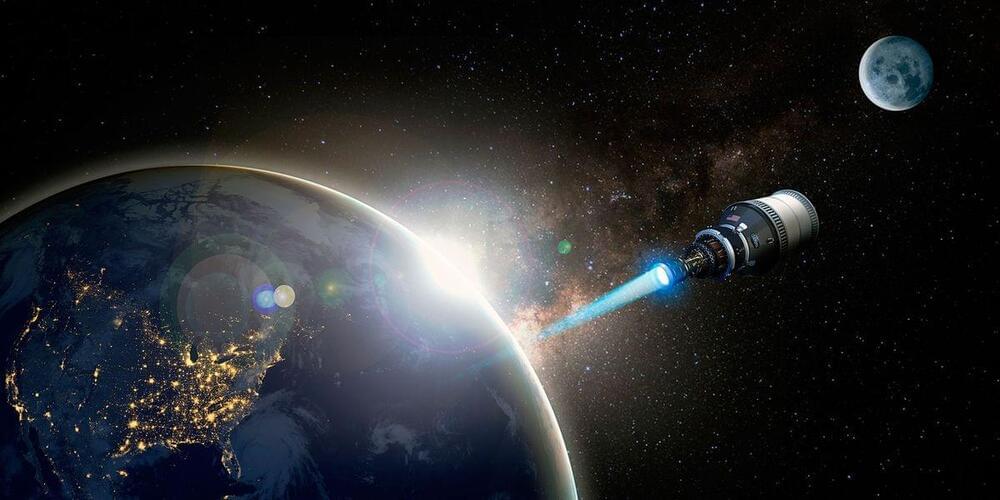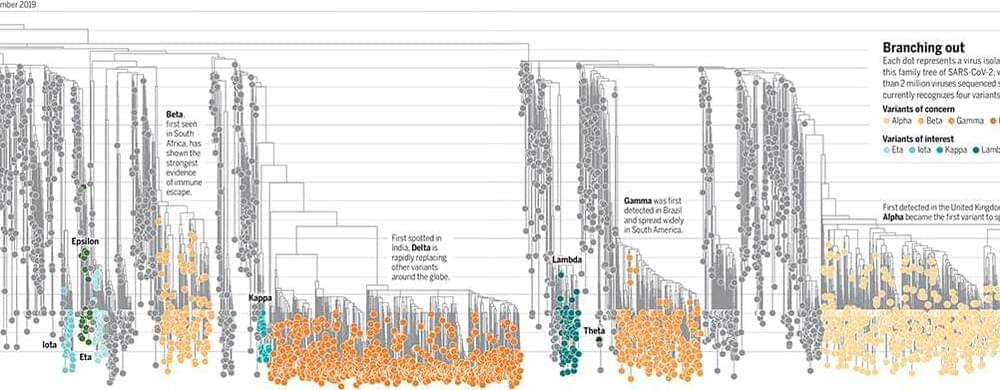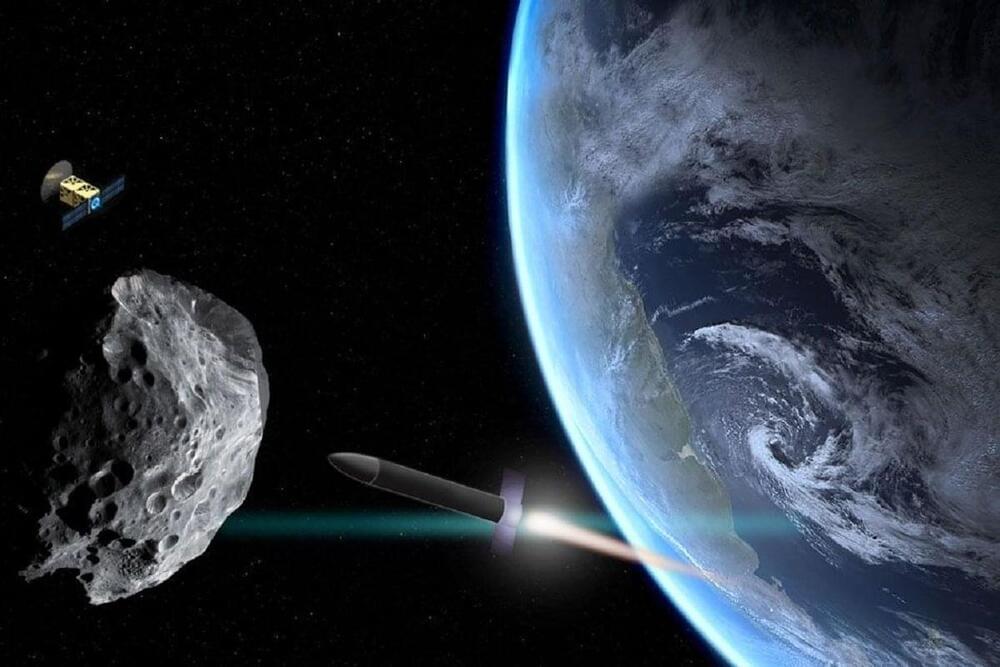Toxic microbial blooms thrived during the Great Dying, the most severe extinction in Earth’s history, and they are proliferating again due to human activity.


I tried to warn them.-Elon Musk.
Elon Musk has warned humanity many times about the dangers of superhuman AI. He thinks the advent of digital superintelligence will bring about profound changes to human civilization. Elon Musk thinks the technological singularity could either be super beneficial or it could be terrible for our society. Elon said that no one knows for sure the impact superhuman AI will have on our world but that one thing is for certain: We will not be able to control it. He thinks artificial intelligence will be used as a weapon and warns that the lack of AI regulation could mean it’s already too late for humanity.
Elon Musk now has adopted a “fatalistic” attitude towards the AI control problem because he feels that nothing is being done to try to mitigate the negative effects of future AI systems.
The reasonable concern about a possible extinction level event from digital Superintelligence stems from the period of time in which Narrow AI achieves artificial general intelligence. Where presumably in this time frame we can do something to stack the odds in our favor.
Today, right now, with our seemingly endless desire for better, faster and cheaper technology, we are collectively contributing in building future AI systems. Whether we are aware of it or not. As Elon Musk put it: We are the biological bootloader for AI.

The existential threat of COVID-19 has highlighted an acute need to develop working therapeutics against emerging health threats. One of the luxuries deep learning has afforded us is the ability to modify the landscape as it unfolds — so long as we can keep up with the viral threat, and access the right data.
As with all new medical maladies, oftentimes the data needs time to catch up, and the virus takes no time to slow down, posing a difficult challenge as it can quickly mutate and become resistant to existing drugs. This led scientists from MIT’s Computer Science and Artificial Intelligence Laboratory (CSAIL) to ask: how can we identify the right synergistic drug combinations for the rapidly spreading SARS-CoV-2?
Typically, data scientists use deep learning to pick out drug combinations with large existing datasets for things like cancer and cardiovascular disease, but, understandably, they can’t be used for new illnesses with limited data.


The spacecraft will provide fast transport between Earth and the moon—and beyond.
Picture this: World War III is just hours away. In the cold vastness of space, enemy robotic spacecraft are slowly adjusting their orbits and preparing to launch a surprise attack on the U.S.’s fleet of satellites. The uncrewed craft, with robotic arms strong enough to disable a satellite, are creeping up on American spacecraft, about to deal a knockout blow to the U.S. military.
But down on Earth, U.S. Space Force guardians have been keeping track of the assassin craft, knowing that in order to present as low a profile target as possible, they have just enough fuel for one attack. At the last minute, after the enemy satellites have committed to attack, the command activates the nuclear thermal propulsion (NTP) engines on the American satellites, quickly boosting them into a higher orbit and safely out of range.

O,.o.
Like Hitting a Bullseye With Your Eyes Closed Two statisticians put into perspective the chances of asteroid Bennu striking Earth in the next 300 years. Even Harry Stamper would probably like these odds. Recently NASA updated its forecast of the chances that the asteroid Bennu, one of the two most hazardous known objects in our solar system, will hit Earth in the next 300 years. New calculations put the odds at 1 in 1,750 a figure slightly higher than previously thought.
The business of private survival shelters has grown during the pandemic. They’re not just for survivalists and doomsday preppers anymore. Bunkers buried in backyards or remote landscapes are capable of withstanding nuclear fallout and hurricanes, as well as violent conflict.
WATCH MORE SO EXPENSIVE NEWS VIDEOS:
How The Tokyo Olympics Became The Most Expensive Summer Games Ever | So Expensive.
Why The Texas Polar Vortex Is So Expensive | So Expensive.
https://www.youtube.com/watch?v=689nDiplmIk.
Why Is Housing In Hong Kong So Expensive? | So Expensive.
https://www.youtube.com/watch?v=cs5L3c40cvk.
#SurvivalBunkers #StormShelter #BusinessInsider.
Business Insider tells you all you need to know about business, finance, tech, retail, and more.
Visit us at: https://www.businessinsider.com.
Subscribe: https://www.youtube.com/user/businessinsider.
BI on Facebook: https://read.bi/2xOcEcj.
BI on Instagram: https://read.bi/2Q2D29T
BI on Twitter: https://read.bi/2xCnzGF
BI on Amazon Prime: http://read.bi/PrimeVideo.
Why survival bunkers are so expensive | so expensive.
Using data from the OSIRIS-REx spacecraft, NASA has updated its predictions about the Bennu asteroid impacting Earth.

This #COVID19 is quite weird it just keeps evolving. In a weird way it is pushing evolution through our immune system. The only thing I know that is similar is like the flu or a bigger organism like cancer. Based on this information the virus just keeps evolving not dying off. Among the weird stuff it doesn’t effect cats or most animals or plants. Basically we either need a universal vaccine which is still being developed or we may need quantum radar to kill off the virus in our bodies when it comes out either that or foglet armor to not breathe it in like Ironman. I find it is just an odd virus as essentially it evolves so fast past even human beings abilities to fend it off even with suits it seems to spread so fast that it cannot be completely contained. From dogs that sniff it out it seems sorta everywhere. I know minor things like high dosages of vitamin c work with zinc and probiotics which was the first way to battle it when it didn’t become this whole pandemic because oddly enough it wasn’t a big deal in previous years because the 19th version of the virus. I know some things that kill it off are ultra violet and lysol as well as bleach. So it makes me think it is more a bioweapon where the universal vaccine would work. But oddly enough I am uncertain if it really dies off especially if it is airborne. If we can destroy the virus by reprogramming it to be sterile or innert or even for it to just kill itself off with crispr like we have done with mosquitoes to stop malaria. We can easily make new vaccines which is good but nearly every year or so there is an entirely new version. This isn’t new but it sorta is like the flu. But there are some theories that I sorta have where it seems to be near heat sources where it grows. Like my uncle who had the virus which we had him turn off electricity and also do vitamin c probiotics and zinc which did work. He ended up getting an antibody naturally this way. I personally got the vaccine and found that it does work but when the new delta version came out it did the same as the last one it sorta just randomly evolves for some reason even smells similar but oddly enough it still remains even after all the lysol. So to me it seems like a bioweapon that is self evolving which is we could use the mechanism to essentially evolve ourselves taking the components of it. If this was a nanobot swarm I would say it spreads from radio waves or something but this virus keeps spreading in odd ways like even from the sky. Which sorta makes me believe that it is sorta being manipulated maybe by a signal perhaps or it has its own program inside it. It reminds me of a Grey goo nanobot swarm that keeps evolving but the biological virus version. I mean it could actually be an exterrestial virus there was a meteorite that came around then and odd things that followed from the meteorite like dogs attacking people and cats attacking people even huge mountain lions. Which makes me think of a sorta an invasion of something. We need to maybe get the viruses input and output to find what it is going to do next. All and all seems odd because even other viruses don’t evolve or like fly or spread that fast. Ideally we should have cyborg nanobots running through Ironman in avengers endgame but so far our best better is treating it like the flu pumping out a new vaccine each year till we know a universal vaccine like using henreitta lacks immortal unlimited cell division cells like they did with polio. But till then we need to keep watching the virus as seems sorta more than it appears based on its original version.
See allHide authors and affiliations.
NOTE: We only request your email address so that the person you are recommending the page to knows that you wanted them to see it, and that it is not junk mail. We do not capture any email address.

NASA calls it the “Double Asteroid Redirection Test,” or DART for short, and the mission involves NASA launching a spacecraft that will rocket towards the Didymos binary asteroid and collide with it. NASA wants to test if the impact of the spacecraft colliding with the asteroid will be enough to alter its course. It should be noted that the asteroid doesn’t currently pose any threat to Earth and that NASA is purely conducting this mission for research purposes.
According to NASA’s latest update on DART, the spacecraft recently received solar arrays that will be a core component to getting the spacecraft all the way to the Didmos asteroid system. The spacecraft will travel for ten months to reach the asteroid system and will launch aboard SpaceX’s Falcon 9 rocket this November. When the spacecraft collides with the asteroid, it will be traveling at around 15,000 mph, and NASA will have Earth-based telescopes aimed at the asteroid for clear observation.
For more information on this story, check out this link here.